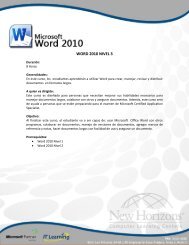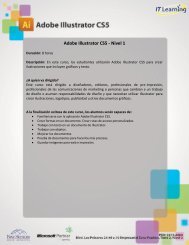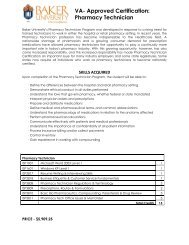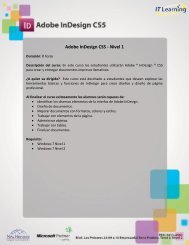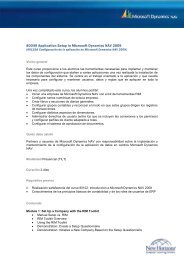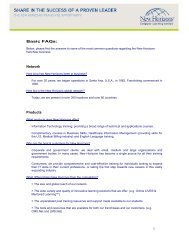CMAA Exam Content, Study Guide & Practice Exam - New Horizons ...
CMAA Exam Content, Study Guide & Practice Exam - New Horizons ...
CMAA Exam Content, Study Guide & Practice Exam - New Horizons ...
You also want an ePaper? Increase the reach of your titles
YUMPU automatically turns print PDFs into web optimized ePapers that Google loves.
<strong>CMAA</strong> <strong>Study</strong> <strong>Guide</strong><br />
The following study guide is meant to assist you in focusing on concepts tested in the certification exam. It is not<br />
intended to replace instruction and/or experience necessary for successfully completing the exam. You will note that<br />
some of the information is given to you –complete– and others are in question format that you must find the answers<br />
to– so that you can test yourself and study the answers.<br />
Appointment Scheduling<br />
<br />
<br />
<br />
<br />
<br />
What documentation is made and what steps do you take when a patient FAILS TO SHOW for their appointment.<br />
The abbreviation NP (when entering an appointment into the book) would mean?<br />
What information would you request from someone making their first appointment with your office, in order to schedule them?<br />
Know how to “mark out the book” with NON_PATIENT TIME (matrix)<br />
Understand the process for scheduling a surgery and what information should be entered into the appointment book<br />
Authorizations<br />
<br />
<br />
Authorization for the insurance carrier to pay the physician directly is called? Assignment of Benefits<br />
Know the form used that authorizes one physician to send information to another physician or facility. Release of Information<br />
Bookkeeping<br />
<br />
<br />
<br />
<br />
<br />
<br />
<br />
<br />
<br />
Understand how to calculate simple percentages; such as 80% of an amount or 20% of an amount.<br />
A Fixed Amount collected at the time of the visit is called a Co-Payment.<br />
When discounts are given to clergy or other professionals (such as physicians) it is called a “Professional Discount”<br />
Deductibles are PAID by the PATIENT– not the insurance company.<br />
What does “Bookkeeping in the Medical Office” generally consist of? Charges, payments and adjustments<br />
Understand the difference between a charge, payment and adjustment, what columns they should be placed in, and whether<br />
they are an “addition” or “subtraction” from the patient’s ledger.<br />
What process would you use to show an amount not allowed by an HMO, and not the responsibility of the patient’s ledger? See<br />
practice exam<br />
Know the “Bookkeeping Rule”; this helps you correctly add, subtract (calculate) entries to a patient’s ledger. Old Balance,<br />
Plus Charges, Minus Payments, Minus Adjustments, Equals <strong>New</strong> Balance<br />
What is the definition of the Accounts Receivables? See practice <strong>Exam</strong><br />
CEUs & Associations<br />
<br />
What are CEUs and why are they important?<br />
Communication Skills<br />
<br />
<br />
<br />
<br />
<br />
Know the difference between negative and positive, verbal and nonverbal behavior and expression.<br />
Computer & Computer File Maintenance<br />
Define a “hard copy” when referring to a document. See <strong>Practice</strong> <strong>Exam</strong><br />
How to make a copy of “stored information” on a computer for safekeeping. Back-up copy<br />
Define the components of a Network. Several computers linked and sharing information<br />
Confidentiality<br />
<br />
<br />
Know how to handle questions from others about a patient’s condition; remember information goes to the patient only unless<br />
there is a release of information signed. See <strong>Practice</strong> <strong>Exam</strong>.<br />
What are a few of the methods you can use to avoid a breach of patient confidentiality in the front office? Charts turned<br />
backward on doors; protection of sign-in sheets, computer screens protected from patient view<br />
Correspondence<br />
<br />
<br />
<br />
Correct way to write a doctor’s name on an inside address of a letter. First name, last name, comma M.D. (or MD)<br />
The best format to use for typing reports or letters is the one your physician prefers.<br />
Know ALL parts of a block style letter (correspondence); the format and the order in which information is presented. See<br />
<strong>Practice</strong> <strong>Exam</strong>




